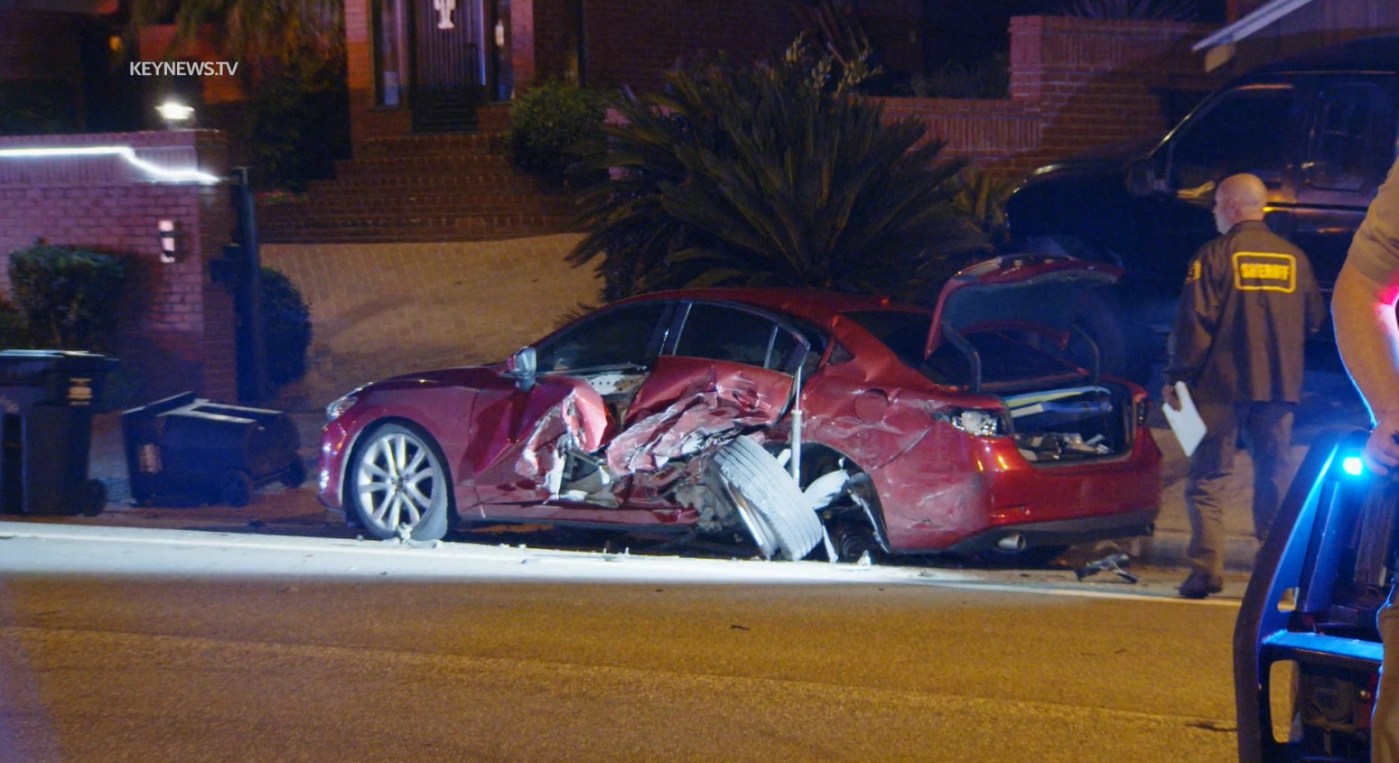By TERRI VERMEULEN KEITH
A 22-year-old man was ordered today to stand trial on murder and vehicular manslaughter charges for allegedly speeding when he crashed into three parked vehicles on Pacific Coast Highway in Malibu in 2023 — killing four Pepperdine University sorority sisters.
Fraser Michael Bohm of Malibu faces four counts each of murder and vehicular manslaughter with gross negligence in the Oct. 17, 2023, nighttime crash that killed Niamh Rolston, 20, Peyton Stewart, 21, Asha Weir, 21, and Deslyn Williams, 21.
All four were seniors at Pepperdine’s Seaver College of Liberal Arts and members of the Alpha Phi sorority. They were set to graduate with Pepperdine’s class of 2024, and received their degrees posthumously.
Ghost Tire Memorial placed at site of Malibu crash that killed 4 Pepperdine students
The four were struck as they walked along the shoulder after getting out of a vehicle in the 45-mph zone, Deputy District Attorney Nathan Bartos told Superior Court Judge Diego H. Edber.
“They were killed because of the driving of the defendant,” the prosecutor said, noting that data retrieved from a device in Bohm’s BMW indicated that the vehicle accelerated from 93 mph to 104 mph just 2 1/2 seconds before the first of three collisions was detected.
Defense attorney Michael Kraut has argued that the data from the so-called black box is “not accurate” and noting that there are warnings that such data could be inaccurate.
Bohm’s attorney — who objected to the murder charges — told the judge that the young man was being “chased in a road-rage incident” and “accelerated” before the deadly crash.
He called his client “a kid” and said there was “no evidence of a past history of any driving violations or a parking violation.”
Bohm has been free on bail.
In arguments following two days of testimony, the prosecutor told the judge that witnesses who estimated that Bohm was traveling about 70 mph had “lost sight of him” as he “continued to accelerate.”
“He consciously decided to get that vehicle up to the speed of 104 miles per hour,” the deputy district attorney said. “He made that decision (and) lost control of his vehicle.”
In a videotaped interview with sheriff’s investigators played in court on Tuesday, April 29, Bohm can be heard saying that “it was an accident” and that he felt “awful.”
Bohm said he had to swerve after “some guy” in a white car swerved into his lane and struck his driver’s-side mirror, resulting in him slamming into the first of the three parked vehicles.
The prosecutor told the judge that the female driver of a white Honda Civic who reported that she saw a car “going really fast” indicated that she never made contact with the BMW before seeing it hit the first parked vehicle. Photos of the Civic showed no apparent damage.
The defense attorney countered that a road-rage incident “does not have to be a high-speed chase,” referring to another motorist whom he called “aggressive” in attempting to confront Bohm about his driving while they were at a traffic light before the crash.
That driver, Victor Calandra, testified Monday that he saw a vehicle driving erratically, moving from lane to lane and swerving, before he and Bohm wound up next to each other at a traffic light.
He said he saw the driver — whom he identified in court as Bohm —holding a mobile phone between his legs and saw his thumb moving.
“I rolled the window down and tried to get his attention,” Calandra said. “I said, ‘Hey, you need to be careful. You’re going to hurt yourself.”‘
He said he got no response from Bohm.
“Isn’t it true that you began to chase Fraser Bohm … after you made your statement to him?” the defense attorney asked.
“Absolutely not,” the prosecution witness responded.
Another prosecution witness, Miguel Cruchinho, testified that he was driving too far behind to see the collision, but said he rushed to Bohm’s BMW when he came upon the collision scene.
He told the judge that he saw the vehicle’s front door was open, saying that he yelled at the man, “‘What are you doing?”‘
The prosecution witness testified that Bohm responded, “I’m sorry, I’m sorry, I’m sorry.” He noted that he was trying to get the young man to sit down because he “didn’t know if he was going to try to run.”
The witness acknowledged that another driver who helped to make sure that Bohm remained at the scene was upset and yelled at him.
“Were you upset?” the prosecutor asked.
“Yes, I was upset because four people had lost their (lives),” Cruchinho said, noting that he had seen the victims’ bodies.
Sheriff’s Sgt. Jim Arens told reporters shortly after the crash that there was “no evidence” the crash stemmed from an alleged road-rage incident.
Sheriff’s officials said Bohm swerved onto the north shoulder of westbound PCH and slammed into three vehicles parked alongside on the roadway. Those parked vehicles struck the four Pepperdine students.
That section of PCH — a short stretch between Las Flores Canyon and Carbon Canyon roads — is known as “Dead Man’s Curve” and has seen previous auto accidents.
The tragedy prompted numerous calls to remedy the dangers and minimize speeds along that section of PCH. No safeguards were in place for pedestrians at the crash scene, even though the city has known about the dangers for decades, lawyers for the students’ parents say.
On the one-year anniversary of the tragedy, Malibu officials discussed initiatives to improve safety along PCH, including new legislation authorizing speed cameras at five critical locations and increased enforcement efforts.
There also are moves underway to redesign PCH.
The case has also prompted civil lawsuits.
The parents of the four students are suing Caltrans, the California Coastal Commission, Los Angeles County and Malibu. The separately filed Santa Monica Superior Court lawsuits say those entities share liability for the allegedly dangerous roadway design and for not implementing life-saving safety measures.
